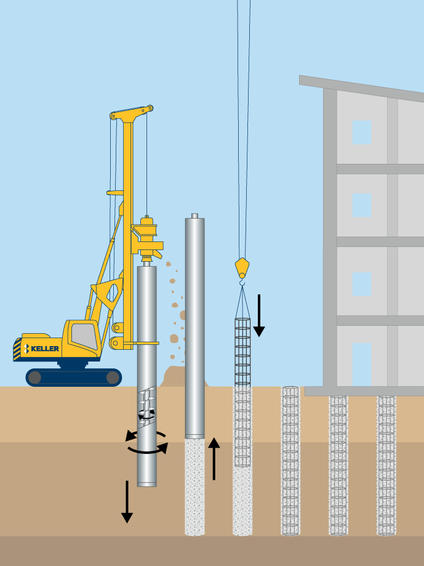The cased CFA pile is a variation on the traditional CFA pile.

Common uses
Process
Cased CFA piles are constructed by rotating a hollow stem continuous flight auger within a temporary casing into the soil to a designated depth. The double rotary drive units for the auger and casing rotate in opposite directions, simultaneously drilling them into the ground. This allows for faster continuous drilling while the casing helps to keep the pile vertical, which is of particular importance for applications such as secant pile retaining walls. Concrete or grout is pumped through the hollow stem, maintaining static head pressure, to fill the pile drill hole as the auger and casing is slowly removed.
Advantages
Quality assurance
Close control of the installation process is essential to ensure the highest quality pile construction.
All Keller CFA rigs are equipped with sensitive state-of-the-art instrumentation that monitors all aspects of CFA piling, including pile depth, auger rotation, penetration rate, concreting pressure, extraction rate and over-break. The instrumentation produces an individual quality control construction record for each pile that includes element identification, date, time and operator details.